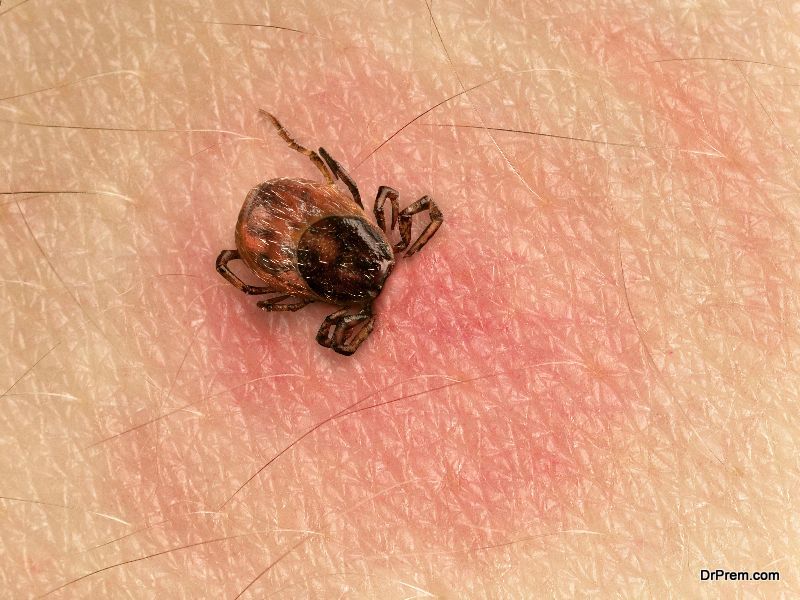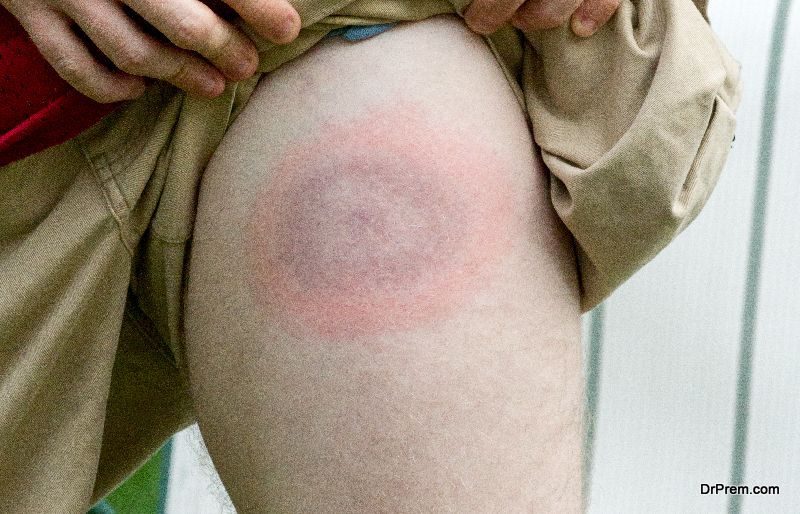Lyme disease is a very real and very serious illness that affects over 300,000 people annually in the United States. That’s a huge number. But do you know exactly what Lyme disease is? How it’s contracted? And the steps you can take to protect yourself against it? Read on to learn how to keep yourself safe against this wide-spread disease.
What is Lyme Disease?

Lyme disease is a bacterial infection that is transmitted to humans through tick and insect bites. The most common type of tick carrying Lyme is the deer tick, also known as a black-legged tick. These ticks get their name because they feed on white-tailed deer. Other large mammals and even pets can also be used as hosts for these tiny insects.
But it has been reported that Lyme disease can be spread by other insects like mosquitoes, fleas, and spiders. The bacterial infection that these types of insects carry is known as borrelia burgdorferi.
There are certain areas in the United States where you are more at risk for contracting Lyme. 14 states located in the Midwest and Northeast are responsible for 96 percent of the reported cases. These states are as far north as Maine and Rhode Island and travel south down the coast to Virginia.
Symptoms
How do you know if you’ve been bit by an insect carrying Lyme disease? There are some pretty clear medical symptoms that accompany this disease.
Symptoms of Lyme disease are most commonly compared to those infected with the flu. Sufferers often complain of a headache, chills, fever, fatigue, and swollen lymph nodes, accompanied by muscle and joint pain. Individuals infected with Lyme disease might also showcase digestive issues including nausea and vomiting or loss of appetite.
The dangerous thing about Lyme disease symptoms is that they can be misdiagnosed as many other illnesses – and often are. Lyme disease is sometimes mistaken for arthritis, chronic fatigue syndrome, and fibromyalgia.
Knowing how to recognize Lyme disease symptoms will help you get the proper treatment you need when you need it.
Physical Signs
Because Lyme disease is a result of an insect bite, there are often visible, physical signs that you’ve been infected. Patients might notice an acute, or butterfly skin rash in the area where the bite occurred. Other individuals exhibit a rash that’s often described as a bull’s-eye. You can identify this skin rash by a large red circle around a red center.
Removing a Tick
Just because you’ve been bit by a tick, does not necessarily mean that you have contracted Lyme disease, but it’s a good idea to err on the side of caution and see a medical professional if you do discover a tick on your body.
Ticks are attracted to warm, moist areas of the body. This means the most commonly affected areas include:
- Armpits
- Hair
- Groin
Once a tick migrates to this area of the body, they bite the skin and begin sucking blood. The difference between a tick and other insects that bite, is that they remain attached to your body following the initial attack. Ticks will become engorged with a victim’s blood and become more visible with time.
If you find a tick on your body, you need to be careful when removing it. If a tick is removed incorrectly, the tick’s mouth can remain embedded in your skin. Here are the necessary steps for proper tick removal.
- Use tweezers to grab the tick as close to the skin as possible.
- Pull upward, with steady, even pressure.
- After removing and discarding the tick, clean the area and your hands with alcohol, soap and water.
Some people suggest using a small flame to force a tick to back out of the skin. This is not a proven, nor recommended method for tick removal. Not only are you at risk for burning your skin, but the heat might actually activate the tick’s saliva production, increasing your risk for contracting Lyme disease or other diseases.
Long Term Effects

Unfortunately, for some sufferers, Lyme disease isn’t just a one-time occurrence. Lyme disease can have long lasting effects. Those affected can suffer long term mood swings, fatigue, and even develop depression.
Those suffering for an extended period of time can also experience cognitive effects. These symptoms include headaches, trouble concentrating, forgetfulness, and disorientation. That’s why Lyme disease early detection, diagnosis and treatment is so important.
Treatment
Lyme disease is often treated with several types of antibiotics, Penicillin, and nonsteroidal anti-inflammatory drugs. The duration of treatment and the approach have a lot to do with the doctor, the time of diagnosis, and the extent of the infection. The earlier Lyme disease is treated, the better chance a patient has for recovery. When Lyme disease lays dormant for too long, patients can experience side-effects for an extended period of time. Those suffering from chronic Lyme disease can even experience recurring symptoms for the rest of their lives.
Prevention
Prevention is the best defense against contracting Lyme disease. Here are just a few preventative methods you can take to protect yourself.
Cover-Up: If you will be in or near wooded and grass areas, be sure to cover up. This means wearing shoes, long pants tucked into your socks, long-sleeved shirts, hats, and gloves. Try to walk and play where pathways are clear from brush or long grass – this is where ticks generally hang out.
Use Bug Spray: Using insect repellent containing DEET is a great way to protect against ticks and other insects that could potentially carry the disease. You can apply spray to exposed skin, while being careful near the face, eyes, and hands. You can also spray repellent directly on your clothing.
Check, Check, and Check: The best form of protection against ticks and tick bites is to check yourself after entering an potentially affected area. This means after spending any time outdoors, to check your clothing and your skin for evidence of ticks immediately after coming inside. Deer ticks are extremely tiny, so you’ll need to conduct a thorough search. Be sure to check all areas of the body, but specifically the ones mentioned above – hair, armpits, and groin.
Knowledge is Power
Knowing what to look for when it comes to Lyme disease symptoms, as well as how to protect yourself are the two best ways to keep yourself safe and healthy. Protect yourself before going outdoors and check yourself after coming inside. Even if you do not physically see a tick on your body, but you’re experiencing any of the above mentioned symptoms, it’s best to consult a medical professional.
Article Submitted By Community Writer




